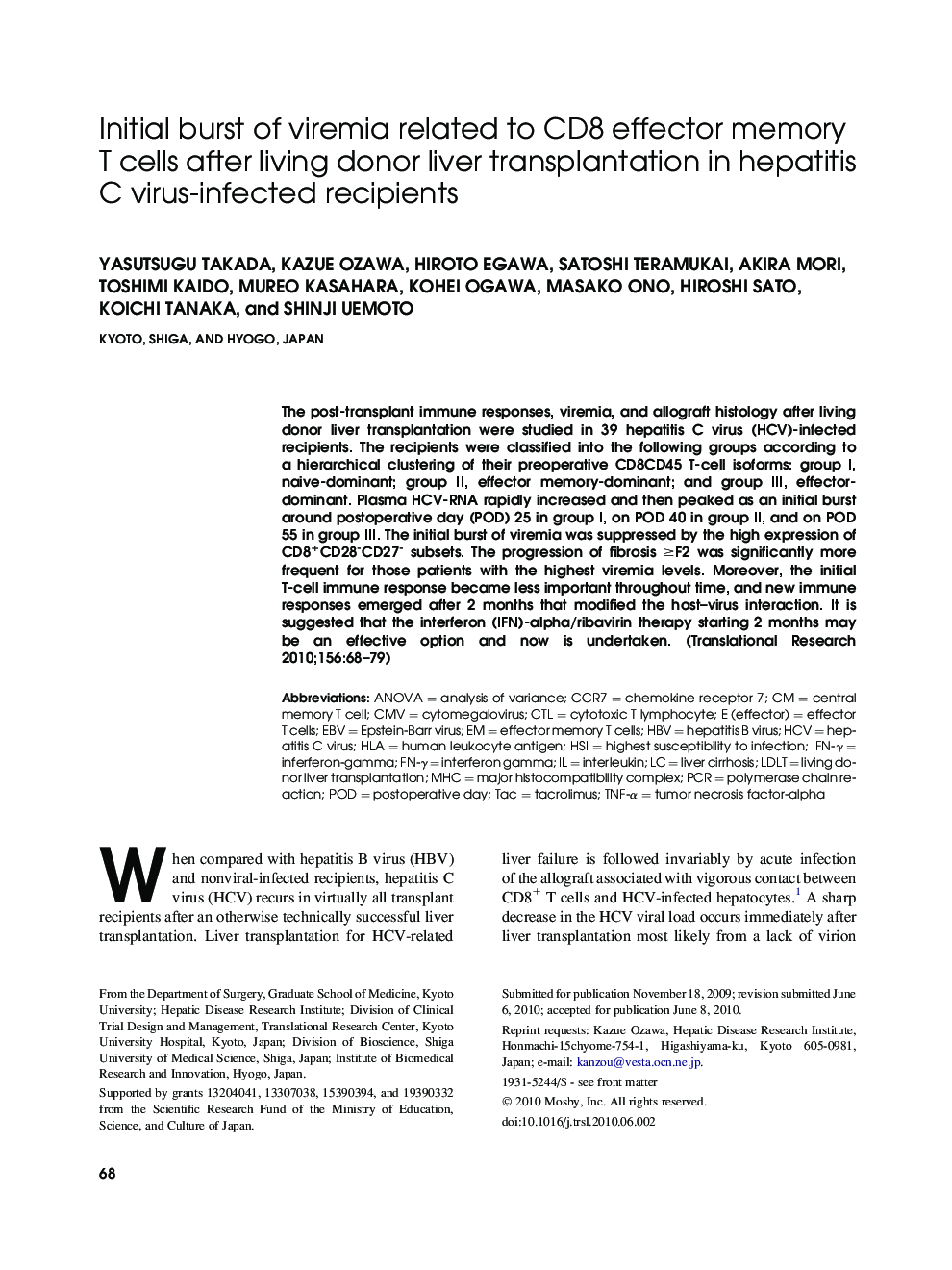| Article ID | Journal | Published Year | Pages | File Type |
|---|---|---|---|---|
| 3841002 | Translational Research | 2010 | 12 Pages |
The post-transplant immune responses, viremia, and allograft histology after living donor liver transplantation were studied in 39 hepatitis C virus (HCV)-infected recipients. The recipients were classified into the following groups according to a hierarchical clustering of their preoperative CD8CD45 T-cell isoforms: group I, naive-dominant; group II, effector memory-dominant; and group III, effector-dominant. Plasma HCV-RNA rapidly increased and then peaked as an initial burst around postoperative day (POD) 25 in group I, on POD 40 in group II, and on POD 55 in group III. The initial burst of viremia was suppressed by the high expression of CD8+CD28-CD27- subsets. The progression of fibrosis ≥F2 was significantly more frequent for those patients with the highest viremia levels. Moreover, the initial T-cell immune response became less important throughout time, and new immune responses emerged after 2 months that modified the host–virus interaction. It is suggested that the interferon (IFN)-alpha/ribavirin therapy starting 2 months may be an effective option and now is undertaken.
